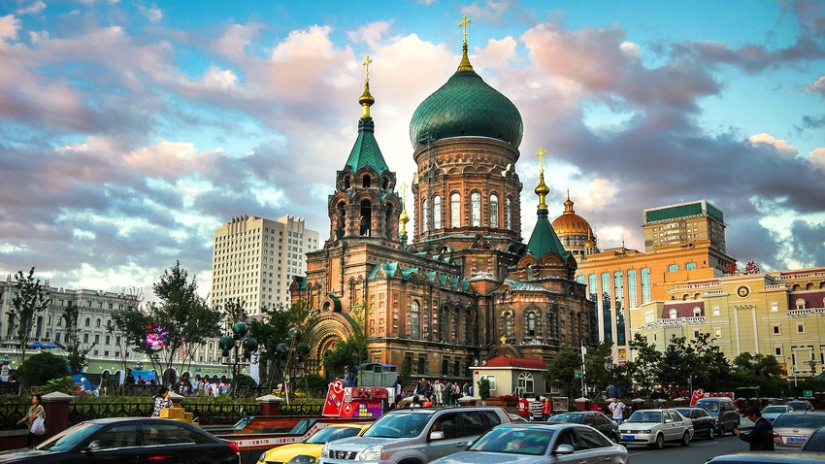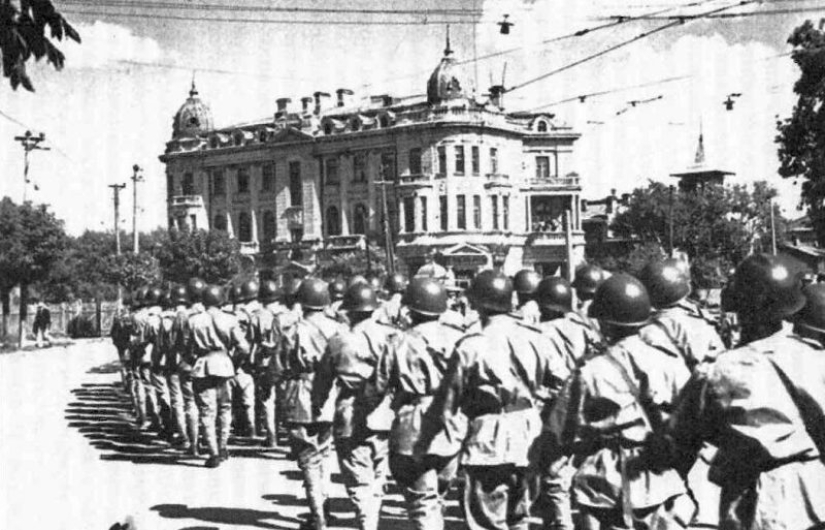Harbin: an amazing history of a Chinese city with Russian roots
The capital of the Chinese province of Heilongjiang, Harbin, is located at a considerable distance from the border with Russia. Despite this, the city is thoroughly imbued with the Russian spirit, and in the old part of it, native motifs are recognized literally at every step. This amazing feature is connected with the history of the city, founded by Russian builders.

Russian city in the heart of China
Modern Harbin is a megacity with more than 12 million people. In this regard, it is difficult to believe that in the middle of the XIX century there was no city in this place, and only rare small villages could be found along the Sungari River.


City plan of 1911
Nowadays, a Russian person is very rare in Harbin, but at the beginning of the XX century, Russians made up the lion's share of the population of this place. The founders of the city are the builders of the Chinese Eastern Railway, which was a large-scale project of the Minister of Finance of the Russian Empire, Count Sergei Witte.

Postcard of the beginning of the XX century
Harbin was to become a major hub station on the way from Irkutsk to Vladivostok. After the railway was built, the village began to develop rapidly and quickly received the status of a city. As of 1917, about 100 thousand people lived in Harbin, of which 40 thousand were Russians.
St. Sophia Cathedral in Harbin. Built in 1907
The city was built taking into account the wishes of Count Witte, who wanted to show the Russian presence in the region as clearly as possible. As a result, the center of Harbin was built up with buildings that have a typical appearance for the central part of Russia.
Jewish community
The beginning of the XX century was marked in Russia with the heyday of anti-Semitism. Fleeing from the pogroms that the Black Hundreds staged in large and small cities of the country, as well as from the ultraconservative imperial policy that restricts the rights of representatives of this people, thousands of Jews moved to Harbin to start a new, safe and happy life there.

Harbin synagogue of the beginning of the XX century
In 1913, the Jewish community of Harbin was 5,000 people, and by 1920 there were more than 20 thousand Jews in the city on the Sungari River. Nowadays, there are very few people who profess Judaism in the Chinese metropolis, but two ancient synagogues and a large Jewish cemetery remind of the Jewish population.
Interior of the main synagogue of Harbin
White emigration
Despite the fact that most of the white emigrants chose to live in Paris, Berlin, Prague or Istanbul, there were also those who wanted to settle in Harbin. After the revolutions that shook Russia in 1917, the Russian population of the city increased from 40 to 120 thousand.
St. Nicholas Cathedral in Harbin, built in 1925 and destroyed during the Cultural Revolution
The Chinese authorities were loyal to people who were looking for salvation from the "red terror" and, despite the fact that the emigrants did not have Chinese citizenship, the largest Russian community in Asia flourished. Russian Russian schools, shops and restaurants were opened in Harbin, Russian-language newspapers were published, Orthodox churches operated.

Postcard of the 20s of the XX century
Harbin and Fascism
In the 30s, when fascism was rearing its head in Europe, many Russian-speaking residents of Harbin welcomed this phenomenon, seeing in it salvation from the Bolsheviks and a chance to return to their homeland. The Russian Fascist Party formed in Harbin, headed by Konstantin Rodzaevsky, entered into an alliance with Imperial Japan, which took the side of Nazi Germany and fascist Italy.

The leaders of the RFP and their Japanese curators
Rodzaevsky announced the elimination of Jews, the strengthening of the influence of the Orthodox Church, as well as the introduction of a new corporatist-type economic system. When Manchuria was annexed by Japan in 1931, the persecution of Jews carried out by members of the Russian Fascist Party led to a decrease in the number of the Jewish population of Harbin from 13 to 5 thousand people.
But the Russian diaspora did not know what kind of trouble came to their homes together with the Kwantung Army of Japan. "The Main Directorate for Water Supply and Prevention of Units of the Kwantung Army" - this was the name of the department that received power over Harbin and its environs.
The total area of the objects of the "Detachment 731" exceeded 40 square kilometers.
Soon, the buildings of the so-called "Detachment 731"appeared 24 km from the city. It was a camp for prisoners of war and people who were not loyal to the Japanese authorities, which later received the glory of the second Auschwitz. The camp was equipped with laboratories in which experiments were carried out on people. The Japanese carried out freezing, autopsies of living people, introduced plague and cholera bacteria to the subjects. About 30% of the prisoners of the "Detachment 731" were Russians.
Sunset of Russian Harbin
In 1935, the Soviet government decided to sell the Chinese Eastern Railway to Japan. After that, most of the Russian-speaking population of Harbin decided to leave the city. Some even decided to return to their homeland — their fate was the most tragic. Almost all the "returnees" were repressed in 1936-1938 on charges of espionage in favor of Japan.

Soviet units enter Harbin
In 1945, when the Red Army units entered the city, the situation of the Russians deteriorated significantly. Purges swept through the city, during which participants of the White Guard movement, members of their families, people who were in the fascist party and just local residents who collaborated with the occupying Japanese authorities were arrested.
Hoisting of the red banner at the Harbin railway station
There were also those who did not want to stay on Chinese soil and preferred to return to Soviet Russia. As a result of these events, the Russian population of the city decreased to an unprecedented size — the 1964 census counted only 450 people.
In winter, Harbin looks even more like a Russian city
Despite the fact that Harbin is developing and getting upset, its residents are careful about the past of their city. Architectural monuments that have been preserved since the period when the city was Russian are maintained in excellent condition, and those that are threatened with demolition are entered by activists in the lists of significant historical monuments.
An indispensable attribute of the annual ice festival held in Harbin is the ice Kremlin, and those who want to get acquainted with the life of the Russian diaspora in this part of China can recommend the atmospheric restaurant "Lucia".
Keywords: Railway | China | Russian | Harbin
Post News ArticleRecent articles

Most of us think that the color of the eggshell does not play any role and it is possible not to pay attention. But it's not and ...

The more we rely on technology, the more potential power hackers gain over us. It doesn't matter if their goal is to help or cause ...
Related articles

We are accustomed to the fact that on the packaging of tea, write "loose" and rarely think about what the word means. Meanwhile, ...

Human intervention in the affairs of nature is extremely rarely successful. Especially a lot of trouble was brought to the ...

The sea is still, you are a woman or a man, if you can hold in their hands an army of 70,000. Chinese Chin si could — she started ...

Creating a good portrait is one of the most difficult tasks for any photographer. In order to make a really natural and memorable ...